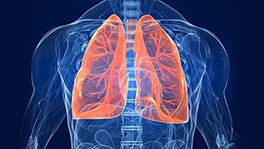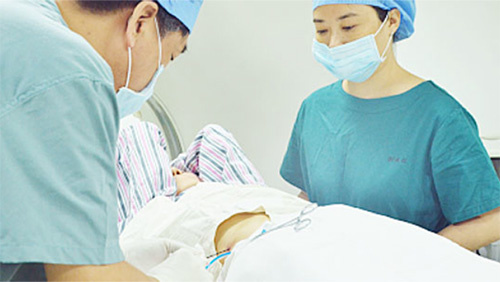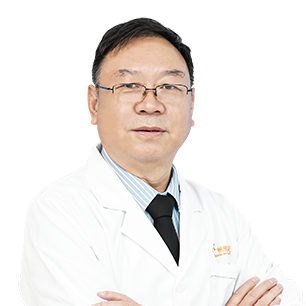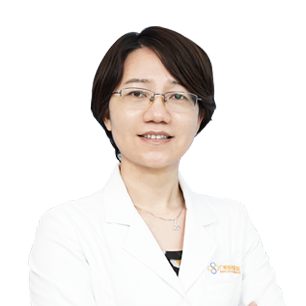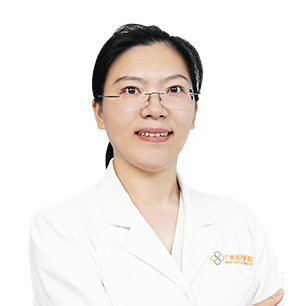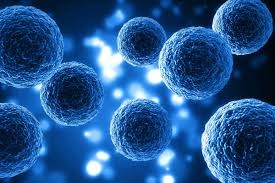 Views:136
Views:136 2024-07-05
2024-07-05 Share
Share
Applicable diseases:
Leukemia, multiple myeloma, and other malignant tumorsTechnology advantages:
Three Types of Stem Cell
According to the ability of differentiation potential, stem cell can be divided into three types.
1. Totipotent stem cells have the ability of differentiation potential to construct a complete and viable organism.
For example, embryonic stem cells, also called ES cells, are a cell system, which are derived from the inner cell mass of early-stage embryo. They are distinguished by their similar morphological characteristic with early-stage embryonic cells and their high ability of differentiation. They can infinitely fertilize and differentiate into more than 200 cell types in the body and develop to any tissues and organs.
2. Multipotent Stem Cells
Multipotent stem cells have the potential ability of differentiating many types of cell tissue but they disable to develop to a complete organism. There is a certain limit for potential ability of the growth. Take bone marrow multipotential blood stem cell as example. It can differentiate to at least 12 kinds of blood cells but can not differentiate to other types of cell except hemopoietic system.
3. Unipotent Stem Cells
Unipotent stem cells can only become one type or two closely related types of cell, such as stem cells of the basal layer of epithelium tissue, myoblast in muscle.
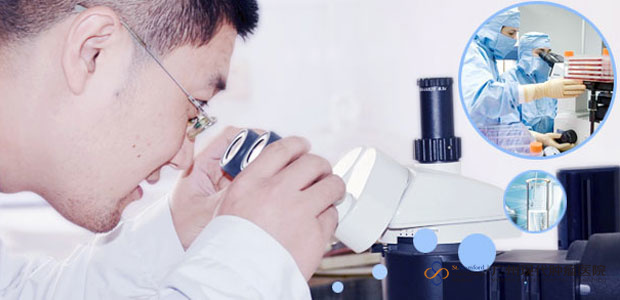
Advantages of Stem Cell Therapy
Stem cell therapy is that stem cells are implanted into patients’ body as “medicine” to repair the tissue and organ with damaged cells so as to control the condition of disease. It can apply to diseases related to organs, tissues, nerves, and anti-aging, etc.
1. It can avoid immunological rejection
2. No need to completely understand the exact mechanism of disease
3. No side-effect of traditional medicine. Stem cell therapy is safer.
What’s stem cells regeneration?
Stem cells regeneration means adopting autologous stem cells for implantation. Where there is sickness, stem cells will be implanted there to cure illnesses, so to speak.
How does stem cells regeneration work?
The conception of regenerative medicine derives from leech, newt, house lizard and some other animals. These animals not only have powerful regenerative stem cells, but also possess mechanisms that can start the growth of stem cells rapidly, so that they can grow new tails and limbs soon after broken.
Stem cells technology is part of "regenerative medicine technology". The greatest value of stem cells technology is that it can produce whole new, younger and normal cells, tissues, organs and so forth by stem cells isolation, culture and directional induced differentiation in vitro. Then implant them into human body via specific implantation technology to replace those natural or pathological dead cells. This technology brings an epoch-making revolution for treating varied intractable diseases (take hepatic cirrhosis for example).
Sources of stem cells for implantation
There are 3 possible sources of stem cells to use for transplants: bone marrow, the bloodstream (peripheral blood), and umbilical cord blood from newborns. Although bone marrow was the first source used in stem cell transplant, peripheral blood is used most often today.
Stem cells implantation procedure of Modern Cancer Hospital Guangzhou:
Step1:Take marrow from patient;
Step2:Isolate, purify and multiply stem cells in vitro;
Step3:Transfuse stem cells suspension back to patient’s liver;
Step4:Stem cells settle in the liver and differentiate into hepatic cells.
Determining factors of effect of stem cells implantation:
1. Qualitative factor of stem cells. The treatment of simply isolating patient’s peripheral blood stem cells and bone marrow stem cells then transfusing them into patient’s body can not achieve a very good effect. The stem cells we use are isolated and cultured with specific technology by Modern Cancer Hospital Guangzhou.
2. Input means. We apply hepatic artery interventional therapy. Currently, portal vein input method, intravenous infusion and transhepatic implantation are used internationally. However, we believe hepatic artery interventional therapy is a good input means since hepatic artery is the nutrition-supplying artery.
3. Treatment circle. We believe treatment circle should be based on patient’s specific conditions. Efficient treatment and less spending are things we should consider for patients.
Clinical applications
Currently, stem cells implantation are internationally used for treating type 1 and type 2 diabetes, diabetic foot, hepatocirrhosis, serious disease of the liver, nephrotic syndrome, lupus nephritis, femoral head necrosis, myasthenia gravis, masculine sexual dysfunction and peripheral vascular diseases, which are very hard to be treated via conventional therapies.
Advantages of Stem Cell Therapy for Diabetes Mellitus
1. Safe and Few Side Effects
Stem cell therapy is safe and has few side effects. Before stem cell therapy, the anti-rejection treatment, targeted induction treatment, stability treatment and safety evaluation test will be processed.
Drug therapy can temporally control the condition of diabetes mellitus. However, meditation for a long time will bring harmful side effects to the body, such as renal function impairment, liver damage, etc.
2. Short Course of Treatment----3 Weeks
It only takes three weeks for patients to receive stem cell therapy for diabetes mellitus. After taking stem cell therapy for diabetes mellitus, patients can throw of the suffering caused by diabetes mellitus in a short term. Some patients are forced to inject anti-diabetic drugs to sustain life and even worse, some can’t get rid of injecting anti-diabetic drugs in their whole life.
Stem cell treatment is effective to 102 patients from total 123 cases of diabetes
Since Apr. 2010, we have treated 123 cases of diabetes by stem cell implantation, among which including type 1 and 2 diabetes. However, there is individual difference on treatment effect through diabetes type, age, physical condition and disease time and so on. Among those 123 diabetes patients, there are 21 patients have stopped anti-diabetic drugs, 81 have cut their anti-diabetic drugs dose, 12 do not show any change and 9 have to increase anti-diabetic drugs dose. To most of them, stem cells play effect 2 weeks after treatment and accompanied by hypoglycemia. The improvement rate on pancreatic islets functions and blood sugar reaches 90-80%, and majority of patients get obvious improvement on pancreatic islets function within half a year without outward reaction.
Effective rate of stem cells to diabetes type 2 is about 85%-95%.
We have spent 5 years to statistically analyze the type 2 diabetes patients who have undertaken stem cell treatment in our center and found that, stem cells are effective to 85%-95% patients, 50% patients have cut half down their dose of anti-diabetic drugs after treatment and their blood sugar is in a more stable range. Additionally, their risk of acute complications like diabetes mellitus keto-acidosis and hypoglycemia decrease greatly, and at the same time their living quality have tremendously improved. 20% patients have stopped anti-diabetic drugs or oral medicine for blood sugar when, the symptoms causing from diabetic retinopathy and diabetic peripheral nervous affection, such as blurring vision, limb numbness and coolness, and prickling have relieved effectively, which really achieve good treatment effect.
Advantages of Stem Cell Therapy for Cirrhosis
Stem cell transplantation has the advantages of low risk, immediate effectiveness, few pain, good efficacy, etc. Compared with liver transplantation therapy or drug therapy, stem cell transplantation highlights its advantage of biotechnology. Stem cell therapy will not bring any side effects with low immunity and rarely develops immunologic rejection. Long-term medication will cause disease’s resistance to the drugs and put extra pressure on the liver. Once patient stops medication, it is life-threatening. Liver transplantation is to put another liver to the patient’s body, which is risky and may develop immunologic rejection. During the operation, surgical complications are possible including excessive bleeding or infection, etc.
Advantages of Stem Cell Therapy for Renal Failure
1. Obvious effect
The effect will present a week after taking treatment. After two cycles of treatment, the kidney function will gradually recover and the symptoms of oliguria, edema, hypertension, anemia will be remarkably improved or even removed. However, medication and dialysis can only relieve the symptoms of diseases without radically repairing the damaged kidney.
2. Safe and Reliable
Stem cell will not bring any side-effect due to low immunity and rarely cause immunologic rejection. This treatment is performed by minimally invasive technology which is with no operation, no pain and quick effectiveness.
3. Extensive Clinical Application
Stem cell therapy can effectively treat the diseases caused by renal failure, while it also takes effect on patients of acute renal insufficiency or of chronic renal insufficiency or at stageⅠ, Ⅱ, Ⅲ(stage of renal failure), Ⅳ(stage of uraemia). Compared with stem cell therapy, medication is more effective to the patients of renal insufficiency at stage Ⅰand dialysis therapy is normally applied to the patients at middle or advanced stage. Kidney transplantation is the last treatment for renal failure patients.
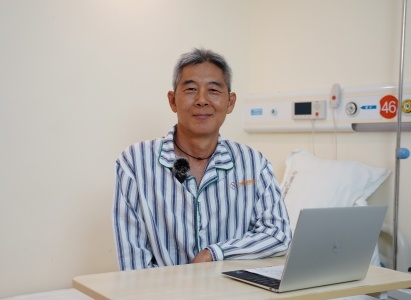 Prostate cancer
Prostate cancer- Mr.Chen
- Malaysiamore than 1 year
Mr.Chen was diagnosed prostate cancer, the local doctor suggested him to undergo a direct resection, but Mr.TING wanted to live a life like normal peop...


 (MY)+60 10-898 8919
(MY)+60 10-898 8919


